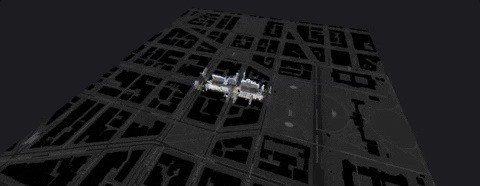The concept of Metaverse, otherwise referred to as AR cloud, where a digital twin of the real world filled with virtual content anchored persistently for all to see, has been a sci-fi dream of futurists for years and an aim for most tech companies who are serious about AR.
It appears Snapchat's parent company Snap shares those aspirations.
- Don't Miss: How to Use Your Favorite Snapchat AR Lenses on Zoom, Skype, Meet & Other Video Conferencing Apps
This week, 3D mapping startup Pixel8.Earth confirmed that Snap has acquired the company. An SEC filing for Snap's quarterly earnings report revealed that the value of the deal was $6.7 million.

"When Pramukta (Kumar), Winnie (Palangpour), Chris (Helm), and I started Pixel8.Earth we wanted to map the world in 3D and a few months ago we received an amazing boost to accomplish that goal. The Pixel8.earth team has joined Snap Inc. We are beyond excited to be part of Snap's Map and AR teams helping them overlay computing on the world," Sean Gorman, CEO of Pixel8.Earth, in a blog post.
Like Pokémon GO maker Niantic's Real World and Ubiquity6's Display.land, the startup's platform leverages crowdsourced data.

While Niantic relies on players of its games to scan landmarks with their mobile devices and Ubiquity6 collects 3D models from its creator community, Pixel8.Earth 360 leverages photos captured by GoPro, Insta360, and mobile devices along with aerial drone footage to construct 3D maps of the world. Using photogrammetry, the system assembles 3D models from point clouds, with each pixel anchored by latitude, longitude, and altitude.
"Ambitious goals require resources and lots of smart people. We couldn't be happier joining such a fabulous team of old and new friends. There is lots of work to be done. Stay tuned as we embark on a new journey to help bring the next generation of computing experiences to the world," said Gorman.

While working with Snap gives the team an influx of capital, Pixel8.Earth adds an AR cloud component to Snapchat, which already has its Snap Map and a robust AR platform. The company has already applied crowdsourcing to enable its Landmarker Targets feature, which uses photos and video of buildings and monuments capture by its users to construct 3D targets for AR effects that interact with the landmarks. A 3D map would enable Snap to not only expand available Landmarker Targets but also add persistent content, perhaps with community submissions.
The AR cloud space is heating up, with Epic Games recently raising $1 billion in funding from investors to build its own vision of the Metaverse. Snap rival Facebook has its own AR cloud, dubbed Live Maps, under development. Magic Leap also has its own AR cloud plans framed as the "Magicverse" (though those plans may be on the backburner as a result of its pivot towards enterprise customers).
Meanwhile, Apple and Google have also implemented tools to facilitate AR cloud properties in mobile apps via their respective ARKit and ARCore toolkits, with Microsoft also offering its own Azure Spatial Anchors for persistent content.
Having established its leadership in AR technology, Snap's entry into the AR cloud space is a welcome development. And it doesn't look like Snap is done with its spending spree, either, with the company announcing a $1 billion offering of senior convertible notes to fund "general corporate purposes," which includes capital expenditures.
Just updated your iPhone? You'll find new features for Podcasts, News, Books, and TV, as well as important security improvements and fresh wallpapers. Find out what's new and changed on your iPhone with the iOS 17.5 update.























Be the First to Comment
Share Your Thoughts